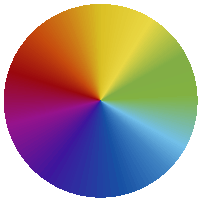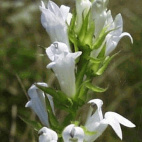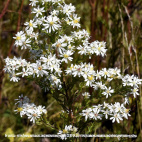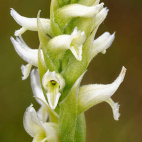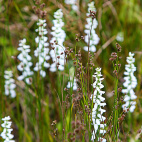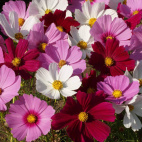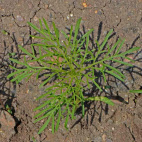Color
Availability
USDA Zone
Region
Type
Duration
Season
Germination
Soil
Sunlight
Height
Use
Narrow Your Search
Color
Availability
USDA Zone
Region
Type
Duration
Season
Germination
Soil
Sunlight
Height
Use
Wildflower Seeds - Northern Region
The Northern region is home to our Canadian friends in the eastern provinces, as well as the northern-most part of the Eastern US. This area is characterized by a long, cold winter with lots of snow, and a short humid summer that only lasts about 3 or 4 months. Most of the area is classified as a UDSA Growing Zone 4 or less, and the species that grow here have interesting ways to perpetuate themselves in spite of the short growing season. There are a lot of forests and wetlands in this region, so adequate moisture is hardly ever a problem. Look up your growing zone to make sure that the Northern wildflower seeds that you want to grow are winter hardy. Alternatively, just order annual flower seeds online so that the plant does not need to make it through the winter, but can reseed itself and come back from seed the next year.
-
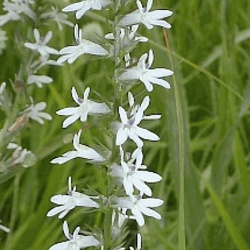 Out Of Stock
Great White Blue Lobelia Seeds
Lobelia siphilitica alba
This rare variation of Blue Lobelia has pure white flowers growing in unbranched spikes. Attractive to hummingbirds and butterflies, this perennial is excellent for naturalized plantings.Quick Viewx
Out Of Stock
Great White Blue Lobelia Seeds
Lobelia siphilitica alba
This rare variation of Blue Lobelia has pure white flowers growing in unbranched spikes. Attractive to hummingbirds and butterflies, this perennial is excellent for naturalized plantings.Quick ViewxGreat White Blue Lobelia Seeds
Lobelia siphilitica alba
This rare variation of Blue Lobelia has pure white flowers growing in unbranched spikes. Attractive to hummingbirds and butterflies, this perennial is excellent for naturalized plantings.
$3.96 Pkt - $136.00 / Oz -
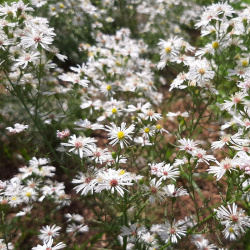 Heath Aster Seeds
Aster ericoides
Named for their resemblance to the white heath of the moors of England, these Asters thrive in dry, rocky prairies or pastures. Since it spreads easily, it will eventually form extended colonies of attractive white bushes.Quick View$3.75 Pkt - $100.00 / Oz
Heath Aster Seeds
Aster ericoides
Named for their resemblance to the white heath of the moors of England, these Asters thrive in dry, rocky prairies or pastures. Since it spreads easily, it will eventually form extended colonies of attractive white bushes.Quick View$3.75 Pkt - $100.00 / Oz -
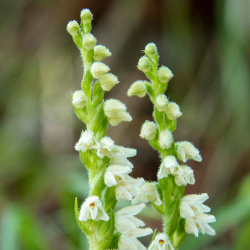 Out Of Stock
Nodding Lady's Tresses Seeds
Spiranthes cernua
These delicate white wildflowers spiral gracefully around petite 9" spires that resemble a braid of long hair. A native cousin of the tropical orchid, this fragrant wildflower grows in moist soils. It can take some skill and patience to grow this gem from seed.Quick Viewx
Out Of Stock
Nodding Lady's Tresses Seeds
Spiranthes cernua
These delicate white wildflowers spiral gracefully around petite 9" spires that resemble a braid of long hair. A native cousin of the tropical orchid, this fragrant wildflower grows in moist soils. It can take some skill and patience to grow this gem from seed.Quick ViewxNodding Lady's Tresses Seeds
Spiranthes cernua
These delicate white wildflowers spiral gracefully around petite 9" spires that resemble a braid of long hair. A native cousin of the tropical orchid, this fragrant wildflower grows in moist soils. It can take some skill and patience to grow this gem from seed.
$3.96 Pkt - $136.00 / Oz -
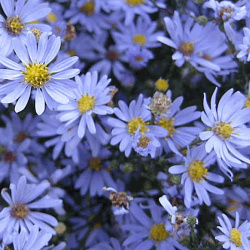 Out Of Stock
Rice Button Aster Seeds
Aster dumosus
These cheery, little flowers are as bright as a button. This notably adaptable species can be found growing wild in areas as diverse as sandy soil, open woods, bogs, or along roadsides.Quick Viewx
Out Of Stock
Rice Button Aster Seeds
Aster dumosus
These cheery, little flowers are as bright as a button. This notably adaptable species can be found growing wild in areas as diverse as sandy soil, open woods, bogs, or along roadsides.Quick ViewxRice Button Aster Seeds
Aster dumosus
These cheery, little flowers are as bright as a button. This notably adaptable species can be found growing wild in areas as diverse as sandy soil, open woods, bogs, or along roadsides.
$3.96 Pkt - $136.00 / Oz -
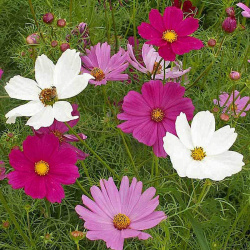 Sensation Tall Cosmos Seed Mix
Cosmos bipinnatus
Create a sensation when these bright blossoms begin to show off in various shades of red, pink, and white! This easy-to-grow annual will enhance any flower garden with little time or effort. Butterflies also love them.Quick View$3.48 Pkt - $7.09 / Oz
Sensation Tall Cosmos Seed Mix
Cosmos bipinnatus
Create a sensation when these bright blossoms begin to show off in various shades of red, pink, and white! This easy-to-grow annual will enhance any flower garden with little time or effort. Butterflies also love them.Quick View$3.48 Pkt - $7.09 / Oz
The Northern region is home to our Canadian friends in the eastern provinces, as well as the northern-most part of the Eastern US. This area is characterized by a long, cold winter with lots of snow, and a short humid summer that only lasts about 3 or 4 months. Most of the area is classified as a UDSA Growing Zone 4 or less, and the species that grow here have interesting ways to perpetuate themselves in spite of the short growing season. There are a lot of forests and wetlands in this region, so adequate moisture is hardly ever a problem. Look up your growing zone to make sure that the Northern wildflower seeds that you want to grow are winter hardy. Alternatively, just order annual flower seeds online so that the plant does not need to make it through the winter, but can reseed itself and come back from seed the next year.


